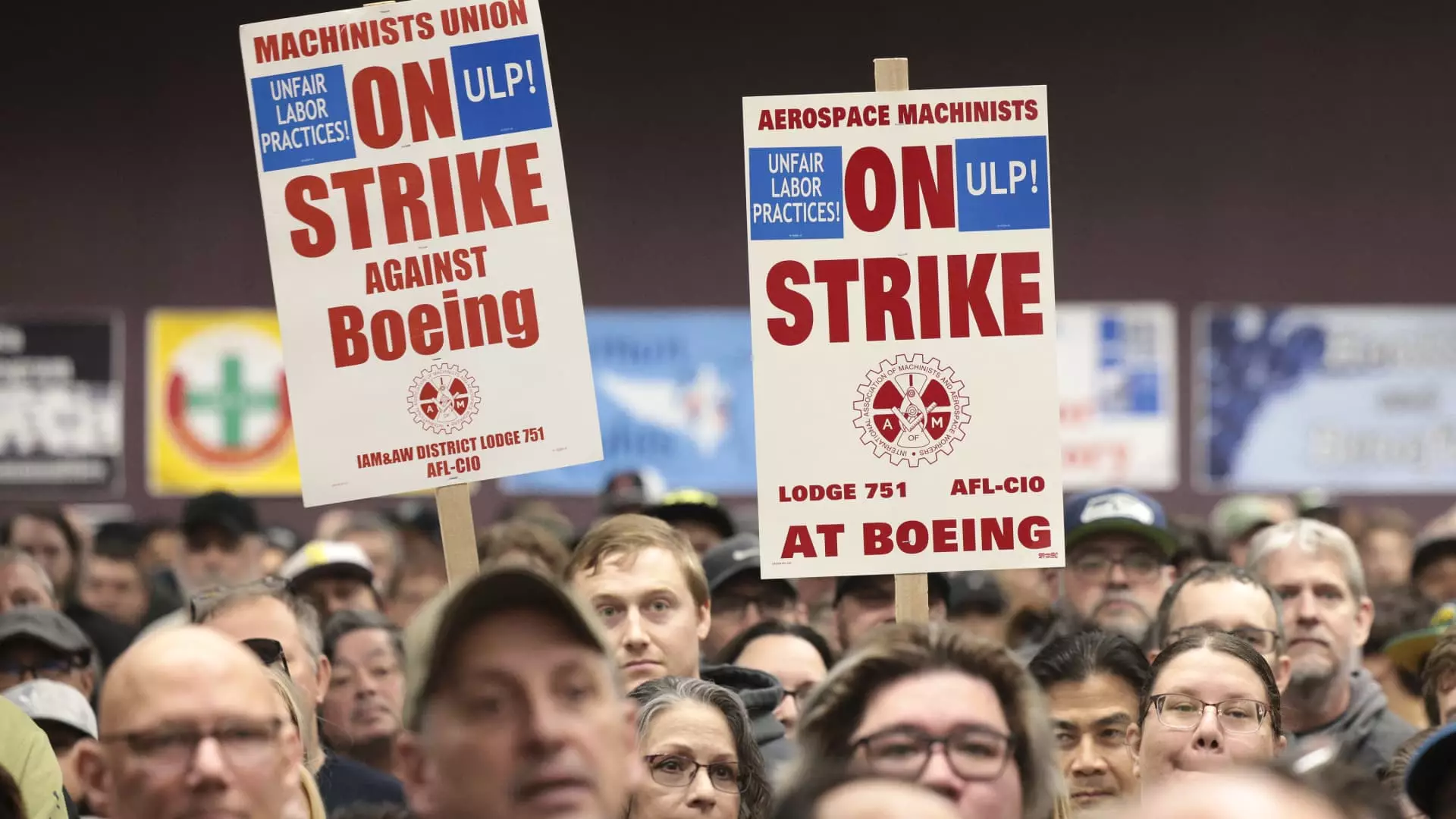Boeing’s recent labor turmoil reflects profound challenges the aerospace giant is grappling with, not only within its workforce but also in its broader operational strategy. The rejection of a labor agreement that proposed substantial wage increases marks a critical moment for the company as it navigates an extended strike, a move that has significant implications for its production capabilities and financial health.
The vote by Boeing machinists against a contract that proposed a 35% wage increase over four years is emblematic of deeper unrest in the workforce. With over 32,000 machinists in the Puget Sound area and beyond participating in this decision, the overwhelming rejection, supported by 64% of the votes, indicates a lack of confidence in the proposed agreement. Several factors contributed to this discontent, including rising living costs in the Seattle region and disappointment over the loss of pension plans in earlier agreements. Workers are demanding more than just wage increases; they are seeking reassurances about their long-term financial security.
The International Association of Machinists and Aerospace Workers initially sought a 40% wage hike, underscoring the stark reality that many workers feel their compensation is not aligning with current economic challenges. This labor dispute, which is the first strike since 2008, showcases the urgency for a revised approach to labor negotiations at Boeing.
The financial implications of this ongoing strike are staggering. Reports suggest that Boeing is losing approximately $1 billion each month due to the halted production—a figure that could severely hinder the company’s recovery trajectory in the post-pandemic landscape. The recent quarterly loss of $6 billion is the largest since 2020, further compounding concerns regarding Boeing’s viability in the competitive aerospace market.
As new CEO Kelly Ortberg faces these challenges head-on, he acknowledges the need for swift resolution to the labor disputes. He aims to refocus the company’s operations and improve relationships with workers. His announcement to potentially reduce the global workforce by 10% reflects a stark reality that the company must operate leaner in a market still recovering from the impacts of COVID-19. The goal is to streamline the company to focus on its core competencies, but this strategy may create further internal dissatisfaction if not managed with transparency and fairness.
Boeing’s strike not only affects its internal operations but presents challenges across the aerospace supply chain. The current labor situation complicates efforts to ramp up production for the 737 and other aircraft models—a necessity for recovering lost production time and meeting ongoing global demand. The complexity of the situation is heightened by the fact that various suppliers, already fragile due to previous disruptions, may have to make drastic decisions, such as layoffs or furloughs if the strike persists.
For instance, Spirit AeroSystems recently indicated it may furlough around 700 workers as a direct response to the extended strike, demonstrating how interconnected the supply chain is with Boeing’s operational decisions. If Boeing’s machinists remain on strike for an extended period, supplier disruptions could be felt even further, suggesting a ripple effect that could destabilize the broader aerospace industry.
To move forward, both Boeing and its machinists will need to engage in open dialogue to reach a mutually agreeable solution. Recent statements from union leaders indicate a willingness to return to the negotiating table, which suggests a potential opening for compromise. This is essential not only for the wellbeing of workers but also for the resurrection of Boeing’s production capabilities.
Boeing’s situation serves as a stark reminder of the necessity of maintaining healthy labor relations in a landscape filled with competition and economic volatility. As the company strives to reclaim its status as a leader in the aerospace industry, addressing the concerns of workers transparently and earnestly will likely be paramount to their success. The resolution of this strike could herald a revitalization of both employee morale and production output, but until then, the cost of labor strife remains high.


Napsat komentář